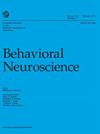A psychological mechanism for the development of anxiety.
IF 1.5
4区 医学
Q3 BEHAVIORAL SCIENCES
引用次数: 0
Abstract
Although numerous behavioral constructs have been proposed to account for anxiety disorders, how these disorders develop within an individual has been difficult to predict. In this perspective, I selectively review clinical and experimental evidence suggesting that avoidance (i.e., safety) behavior increases beliefs of threat or fear. The experimental evidence has been replicated numerous times, with different parameters, and shows that when human participants emit avoidance responses in the presence of a neutral stimulus, they later show heightened expectations of threat in the presence of the neutral stimulus. I interpret these findings as resulting from prediction errors as anticipated by the Rescorla-Wagner model, although other animal learning theories can also predict the phenomenon. I discuss some implications and offer a few novel predictions. The analysis presented here sheds light on a phenomenon of theoretical and clinical relevance which is accommodated by basic associative learning theory. (PsycInfo Database Record (c) 2024 APA, all rights reserved).焦虑发展的心理机制
尽管已经提出了许多行为建构来解释焦虑症,但这些焦虑症是如何在个体内部发展的却很难预测。在这一观点中,我有选择性地回顾了临床和实验证据,这些证据表明回避(即安全)行为会增加对威胁或恐惧的信念。这些实验证据已经用不同的参数重复了无数次,结果表明,当人类参与者在中性刺激面前做出回避反应时,他们随后会在中性刺激面前表现出更高的威胁预期。尽管其他动物学习理论也能预测这一现象,但我将这些发现解释为雷斯克拉-瓦格纳模型所预期的预测错误所致。我讨论了一些影响,并提出了一些新的预测。本文的分析揭示了一种具有理论和临床意义的现象,这种现象可以被基本的联想学习理论所包容。(PsycInfo Database Record (c) 2024 APA, 版权所有)。
本文章由计算机程序翻译,如有差异,请以英文原文为准。
求助全文
约1分钟内获得全文
求助全文
来源期刊

Behavioral neuroscience
医学-行为科学
CiteScore
3.40
自引率
0.00%
发文量
51
审稿时长
6-12 weeks
期刊介绍:
Behavioral Neuroscience publishes original research articles as well as reviews in the broad field of the neural bases of behavior.
 求助内容:
求助内容: 应助结果提醒方式:
应助结果提醒方式:


